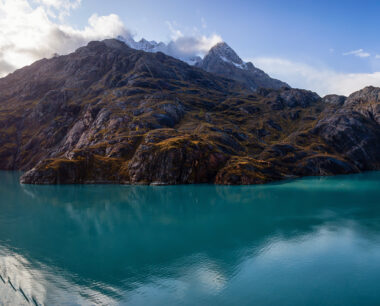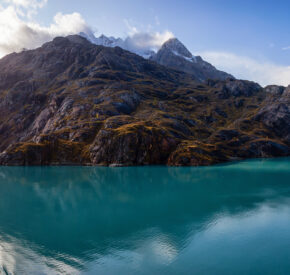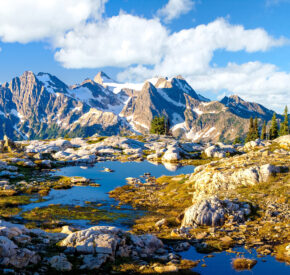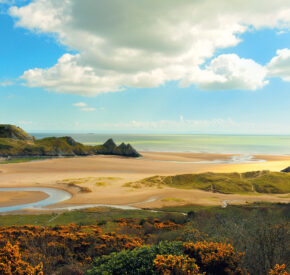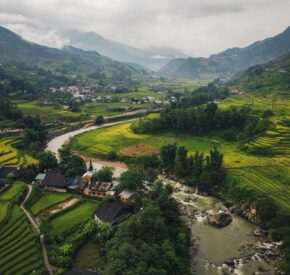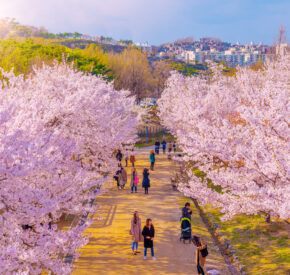
US National Parks: what you need to know about visiting in 2025
As staff cuts put pressure on the USA’s most popular national parks, we share the lesser-known sites that are worthy of your attention…
“The best idea we ever had.” That’s how American writer and environmentalist Wallace Stegner described the USA’s national park system back in 1983. Decades on, the statement rings true.
Since 1916, the National Park Service (NPS) has protected America’s greatest wildernesses, from the titanic peaks of the Rockies to the kaleidoscopic hot springs of Yellowstone. Skyscraping sequoias, cacti-stitched deserts, mangrove-filled wetlands, rocky coastlines, waterfalls, lakes, badlands – the mind-boggling diversity of the USA’s landscapes is on display across the country’s national park sites.
More recently, the NPS has been making efforts to incorporate Indigenous voices into its storytelling. Most national parks exist on land that once belonged to Native peoples. We’ve seen new visitor centres focused on Native storytelling and land management plans formed in conjunction with local tribes.
But the National Park Service as we know it is under threat. Last week, the Trump administration made sweeping cuts to the NPS workforce, with around 1,000 full-time employees losing their jobs. The slashes affected everyone from fee collectors to cultural interpreters to trail maintenance staff.
Many of the USA’s most popular national parks have grappled with overtourism in recent years and, as the busy summer season approaches, there are concerns as to how a depleted workforce will cope with ever rising visitor numbers. Individuals have warned about the effects on both the parks’ natural resources and their visitors, citing the possibility of long lines, unmaintained facilities and diminished cultural experiences.
National parks are a precious part of the US travel experience and any visit this year should involve careful planning. And as pressure mounts on the USA’s most popular national parks, it’s also worth setting your sights on those with fewer crowds. We share some lesser visited parks that stand up to the big hitters.
Six national parks to put on your radar in 2025:
1. North Cascades National Park, Washington
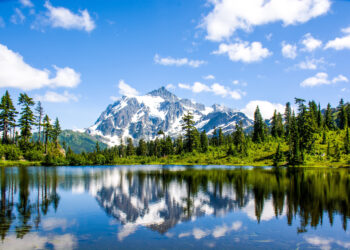
An alternative to: Glacier National Park, Montana
Turquoise lakes, glaciers and crowns of jagged peaks draw around 2.9 million visitors to Montana’s Glacier National Park each year. Yet an average of just 40,000 people per year explore the comparable landscapes of North Cascades in Washington.
Just over a two hour drive from buzzing Seattle, North Cascades supports the largest glacial system in the contiguous US, protecting some 300 glaciers. The approachable Cascade Pass Trail plunges day hikers into the alpine wilderness, taking in epic views of the mountains and glaciers along its 12km. Meanwhile, the park’s stirring old-growth forests are best enjoyed on the Fourth of July Pass trail, which also offers intermittent views of lakes and valleys.
Top tip: This is a remote and rugged environment and, with reduced staffing, it’s more important than ever to follow safety protocols at the USA’s national parks. Stick to trails, be prepared with provisions and appropriate clothing, and keep paper maps for navigation.
2. Lassen Volcanic National Park, California
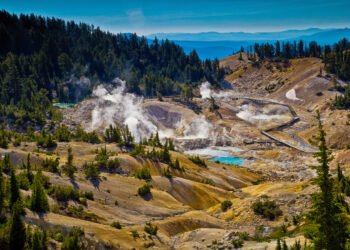
An alternative to: Yellowstone National Park, Wyoming, Montana and Idaho
Yellowstone was the USA’s very first national park, protected way back in 1872, years before the National Park Service itself was established. Fast-forward more than 150 years and the park – known for its bubbling mud pots, spurting geysers and eye-popping Grand Prismatic Spring – is consistently among the top ten most visited parks annually.
That’s no surprise, of course – but did you know that another geothermal wonderland with vastly fewer visitors hides in California? The Golden State’s Lassen Volcanic National Park welcomes less than half a million visitors each year, meaning you might have its fumarole-fringed boardwalks all to yourself.
The jewel of the park’s trail system is the Lassen Peak Trail, a challenging 8km roundtrip that ascends a soaring volcano and rewards weary hikers with epic vistas over the surroundings. Other top routes climb jet-back cinder cones or pass by peak-fringed lakes. For an alternative adventure, come in winter, when a blanket of snow gives the volcanic landscape extra drama.
3. Congaree National Park, South Carolina
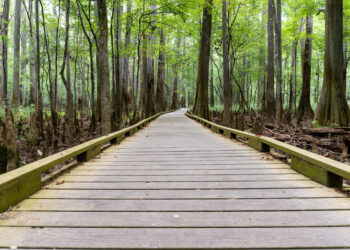
An alternative to: Everglades National Park, Florida
Around 1.5 million acres of mangroves, cypress swamps, pinelands and prairie are protected by Everglades National Park, which sprawls out in the southern reaches of Florida. It’s little wonder that this watery oasis draws so many travellers – but the quieter Congaree National Park in South Carolina has much of the charm of its Floridian cousin, and far fewer visitors.
The park contains the largest continuous expanse of old-growth bottomland hardwood forest in this part of the States. Explore it by hiking along winding boardwalks or taking to the alligator-filled waters on a guided kayak tour. If you want to go it alone, the Cedar Creek Canoe Trail strikes out for 24km, wiggling past bald cypress and tupelo trees.
4. Black Canyon of the Gunnison National Park, Colorado
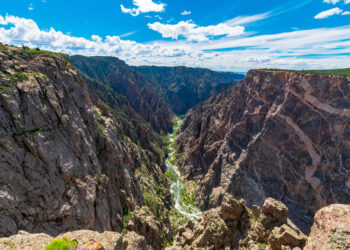
An alternative to: Grand Canyon National Park, Arizona
The mighty Grand Canyon is the most famous in America – but the southwest has another dramatic ravine that’s worth travelling for.
Colorado’s Black Canyon was carved out by the Gunnison River over the course of two million years and today it’s a wonderland of rippling bluffs and spires. It plunges down to more than 800m at some points and winds out for a total of 77 km.
The park is celebrating 10 years as an International Dark Sky Park in 2025 and, typically, there are summertime astronomy programmes (including talks and telescope sessions) and an Astronomy Festival in September. During the day, you can take in the rocky landscapes on hiking, rock climbing or horse riding adventures – or catch them through your window along the 11km South Rim Drive, which reveals a series of soaring overlooks as it ascends through the park.
5. Saguaro National Park, Arizona
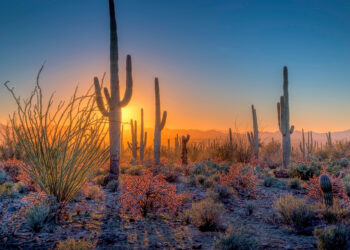
An alternative to: Joshua Tree National Park, California
Gnarled, spiny yuccas characterise the landscapes of Joshua Tree, which is typically among the USA’s most visited parks year on year. But you’ll also find desert drama aplenty in Saguaro National Park, unfolding around the Arizona city of Tucson, almost 500km to the east.
Both the site’s East and West Districts are carpeted in the park’s namesake – soaring cacti that can reach up to 23m in height. Explore trails lacing through groves of skyscraping saguaros and mesquite trees; cycle the 13km paved Cactus Forest Loop; and stay for the glittering night skies – the park is a designated Urban Night Sky Place.
6. New River Gorge National Park and Preserve, West Virginia
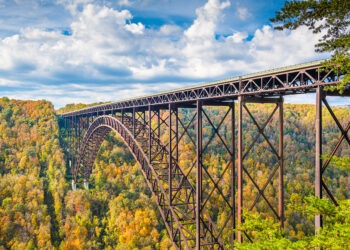
An alternative to: Great Smoky Mountains National Park, Tennessee and North Carolina
Year on year, Great Smoky Mountains National Park is the most visited national park in the USA, drawing in travellers with its forested mountains, scenic drives and black bears. Yet there’s another Southern Appalachian park that’s just as rich in mountain vistas, but attracts much thinner crowds.
Head to West Virginia’s New River Gorge National Park – the newest site in the system – for hikes through rippling forested peaks and views over a gaping canyon. The winding New River is the second oldest in the world and it’s the location for some of the USA’s best white-water rafting. Consider timing your trip for Bridge Day: a one-day festival that celebrates the soaring New River Gorge Bridge and sees BASE jumpers plunge from its steel expanse.
Other ways you can help
The National Park Foundation is the official charitable partner of the National Park Service. It’s possible to donate to the National Park Foundation to aid everything from conservation work to education and engagement programmes. There are also many dedicated ‘national park friends’ groups who also welcome support as they work to protect their local site.





